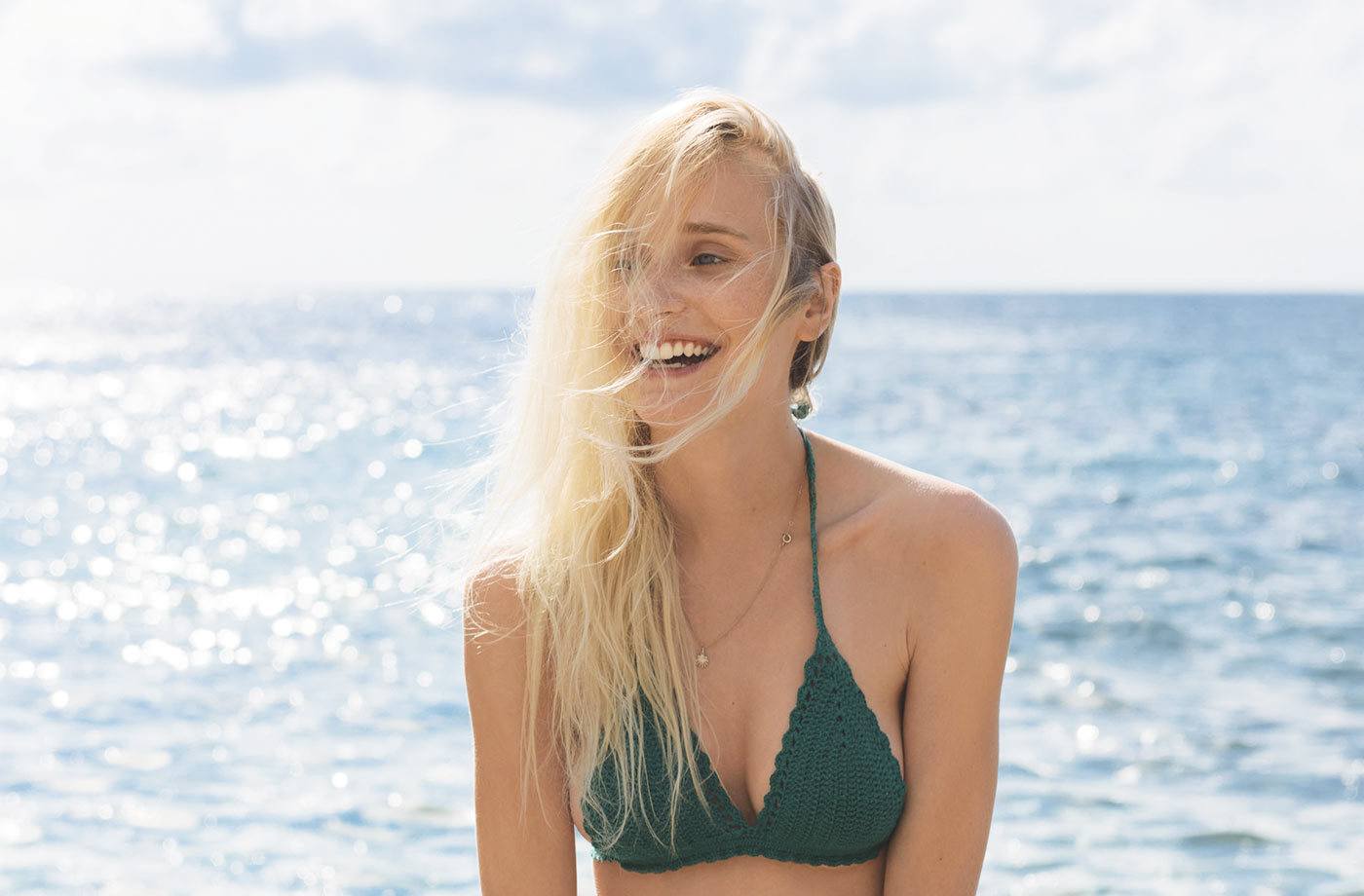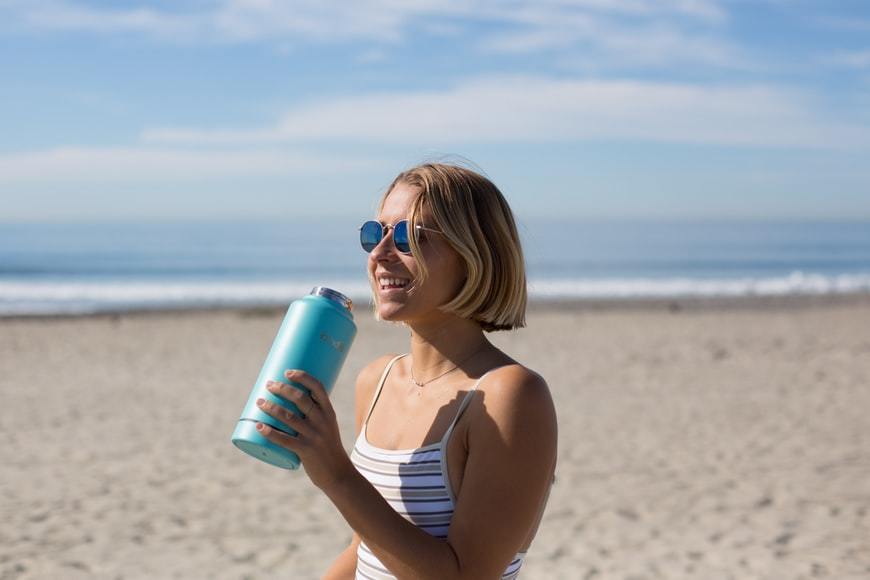
August 17, 2019 at 10:00AM by CWC
Nearly 10 million people visit Hawaiʻi each year, and despite the enduring cliché of the sunburned tourist, the majority of travelers wear sunscreen at some point. But as people have been protecting their skin, they’ve inadvertently been damaging one of the islands’ most valuable assets: its coral reefs. Chemicals commonly found in sunscreens cause coral bleaching and overall degradation of the marine environment. The situation is dire enough that last year, Hawaiʻi became the first United States state to ban the sale of sunscreens containing two chemicals known to harm reefs.
Beginning in 2021, sunscreen formulas with oxybenzone and octinoxate will no longer be available for purchase in Hawaiʻi. But considering the amount of sunscreen that ends up in reef waters—at least 4,000 tons per year, according to the National Park Service—there’s already an effort to encourage visitors to use a safer option as soon as possible. After giving away nearly 300,000 sample packets of Raw Elements mineral sunscreen on its flights, Hawaiian Airlines now sells the product on its flights at a discounted price—which gives tourists an incentive to make a better choice before stepping foot on the islands. Similarly, the Surfjack hotel in Waikiki offers guests the same sunscreen in pump dispensers—free—so visitors are encouraged to slather it on before they head to the beach.
And yet, if you ask locals in Hawaiʻi, banning two chemicals is just one step in protecting the state’s reefs. The bigger challenge involves getting people to understand just how crucial reefs are to planetary and human health—and getting them to give enough of a damn to do something about it. To that end, Honolulu played host to June’s inaugural World Reef Day, a day of advocacy and awareness that drew surfers, politicians, conservationists, and activists together to reflect on the value and vulnerability of the ocean. But as it turns out, coral and sharks aren’t the only living creatures whose health may be affected by sunscreen floating in the waters. Humans are vulnerable, too.

The FDA is about to take a stance
Brian Guadagno has the easygoing, positive vibe of a guy who was an ocean lifeguard for 15 years. “I spent my whole life wearing chemical sunscreen, spraying SPF 70 on me, and I never even thought to look at what it was doing to my body,” he recalls. But as he started to learn about the effects of chemical sunscreens on the ocean, he began researching correlations between those chemicals and changes in human health. That led him to develop Raw Elements mineral sunscreen 12 years ago. Now, as one of the main organizers of World Reef Day, he seems encouraged, not smug, to see his point of view becoming mainstream.
ADVERTISEMENT
ADVERTISEMENTKate Spade Autumn/Winter Sale |
“We know about the issue for the environment,” Guadagno says. “Now the FDA is calling into question the safety of all the chemical sunscreen ingredients on human health.” He’s referring to new proposed FDA regulations, mandated by a 2014 law, that call for a new process in reviewing sunscreen safety and efficacy. The final regulations are due in November of this year, but the proposed ones list only zinc oxide and titanium dioxide as sunscreen ingredients that are “generally recognized as safe,” or GRASE. As for 12 chemical sunscreen ingredients, the FDA now says there is “insufficient safety data to make a positive GRASE determination at this time.”
In short, this means that more data and research is needed for chemical filters to receive the GRASE distinction. According to the Centers for Disease Control, 97% of people tested have oxybenzone present in their urine, and a recent FDA pilot study found that chemicals in sunscreen enter the bloodstream. While dermatologists still say that spraying any sunscreen on is better than leaving your skin to fend for itself, toxicity researchers are only beginning to understand how they affect our bodies and at what levels the ingredients can safely reside within our bloodstreams.
Finding safer sunscreens takes effort
Whether driven by a desire to protect the oceans or their own bodies, many people are already looking for mineral sunscreens that are safe for both humans and sea. In theory, doing so should be as easy as seeking out a “reef-safe” sticker—and there’s no shortage of sunscreen brands with those. Reality, however, presents a more complicated set of questions for conscious shoppers. For instance, the common “reef-friendly” doesn’t mean a formula is necessarily reef-safe. “There is consumer confusion,” says Craig Downs, PhD, the executive director of the Haereticus Environmental Laboratory, a nonprofit scientific organization that has studied the effects of sunscreen on coral reefs and humans.. “And if any of my emails from normal, random people are any indication, we’re beginning to see consumer outrage.”
That’s partly because there’s no universal, government-regulated definition for what “reef-safe” sunscreen actually means. In response to this gap, Representative Tulsi Gabbard (D-HI) recently proposed the Reef Safe Act of 2019, which would mandate official FDA standards and definitions. Such standards should require toxicity testing of different formulas to prove the absence of harm on reef organisms, Dr. Downs says. For instance, a formula could be free of oxybenzone and octinoxate, but it could still include a host of other ingredients—from synthetic chemicals such as avobenzone to organic ingredients like lavender—that may also harm reefs. “That’s why you have to test,” says Dr. Downs. “No one knows if a product is safe or not otherwise.”
In the meantime, you’ll have to do some digging to protect yourself and the ocean. First, seek shade and use UPF protective clothing to block the sun’s rays as much as possible. “If you wear a one-piece bathing suit with long arms, you’re reducing your sunscreen load in the environment by over 50 percent,” Dr. Downs says. Then use sunscreen. Look for a simple formula made with non-nano zinc oxide (nano-zinc has been shown to damage the reefs as well), which works by forming a broad-spectrum physical shield between skin and the sun’s rays. (Titanium dioxide is also thought to be safe to reefs and humans, but it doesn’t block UVA rays as well as zinc oxide.) In the current absence of easy-to-understand sunscreen guidelines, consumers have to educate themselves.

What’s next
Politically speaking, 2018 was the tipping point for the sunscreen-reef issue. Since last year’s Hawaiʻi ban, similar laws have passed in Aruba, Thailand, Palau, Costa Rica, Key West, FL, and the U.S. Virgin Islands. And there are signs that the chemicals may be under further scrutiny in the future. Senators Mazie Hirono (D-HI) and Jeff Merkley (D-OR) recently introduced legislation that would require the Environmental Protection Agency (EPA) to study effects of oxybenzone and octinoxate on humans and the environment.
Meanwhile, although coral reefs still face serious threats from climate change, plastic waste, and pollution, their aquatic environment should see fewer sunscreen chemicals soon—which gives reefs a fighting chance to recover and perhaps even thrive again. And as more people take a closer look at the unintended effects of using sunscreen, this is for certain: one way or another, the tides are turning.
Perhaps you’re thinking of trying a DIY sunscreen. Here’s why that’s a bad idea. And if you want to embrace your inner surfer, this is how to do it.
Author Annie Tomlin | Well and Good
Selected by CWC
ADVERTISEMENT
ADVERTISEMENTUp to 30% off Gift Sets |





